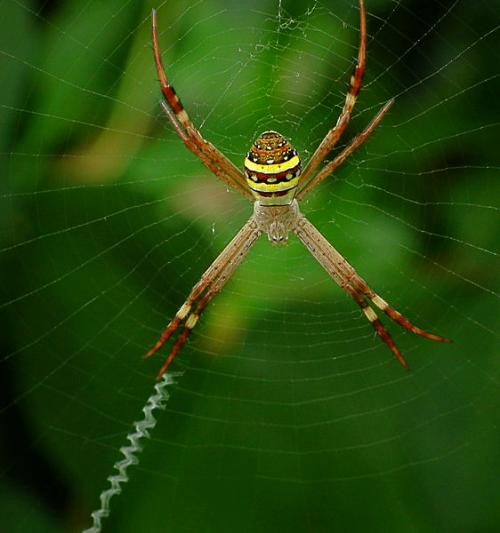Researchers from the University of Hamburg, Germany and Macquarie University in Australia, studying St. Andrew’s Cross spiders, have found that male spiders looking for suitable mates, smell the webs woven by females and determine the females are ready for mating. The researchers observed several specimens of the species and conducted numerous experiment in their laboratory and finally concluded that smelling the pheromones present on the female web, male spider make a decision whether to move closer to the female for mating or not.
Both, male and female St. Andrew’s Cross spiders has dual sex organs, one on the left and another on the right side of the body. For mating, the organ in male and female should match for reproduction i.e. right organ of the male can only match with the right organ of the female and the left with the left. Also, another interesting fact that is observed in the mating process of the species is that after mating the males losses its organ (pedipalp), which remains inserted like a plug or stopper in the female organ. This deters other males from trying to mate with that organ of the female. It also limits, both male and the females mating opportunity and so both the genders can only copulate twice.
The St. Andrew’s Cross female spiders are much larger in size as compared to the males. And are known for eating male spiders when hungry or when her both the organs are plugged and she is not available for copulating. Therefore, it is not advisable for the males while looking for suitable females to climb the female web and check if the female is available or have already mated.
To understand how the male determines the availability of the females, researchers observed male spiders kept on a wooden peg that also had webs of two female spiders anchored on it. The researchers found that the male spiders sniffed and determined whether the female was available. The male spiders can easily grasp telltale pheromones and simply judges the reproductive state of the female. However, sniffing pheromones did not tell anything about the female organ which is available for mating (left or right). And unfortunately, the male spider has to still take the risk to go close to females to check her compatibility.
The researchers also noticed that no male spider ever mated with the same female spider twice, even if all other females available have already mated twice or are incompatible. This indicates the strong desire of the males for spreading their genes, which is even greater and stronger than the urge to procreate. This also suggests that seeking and copulating with a different female yields greater results than the advantage of monopolizing the female by copulating again with her.




